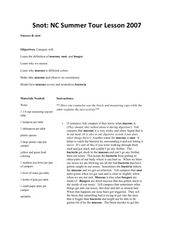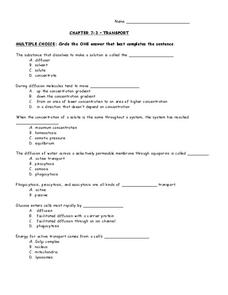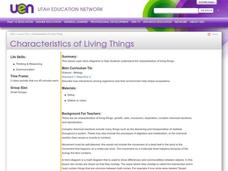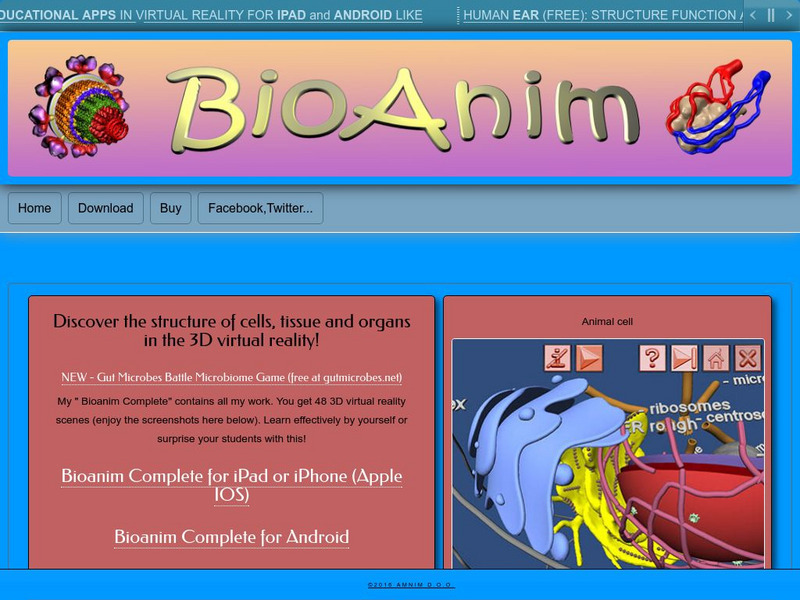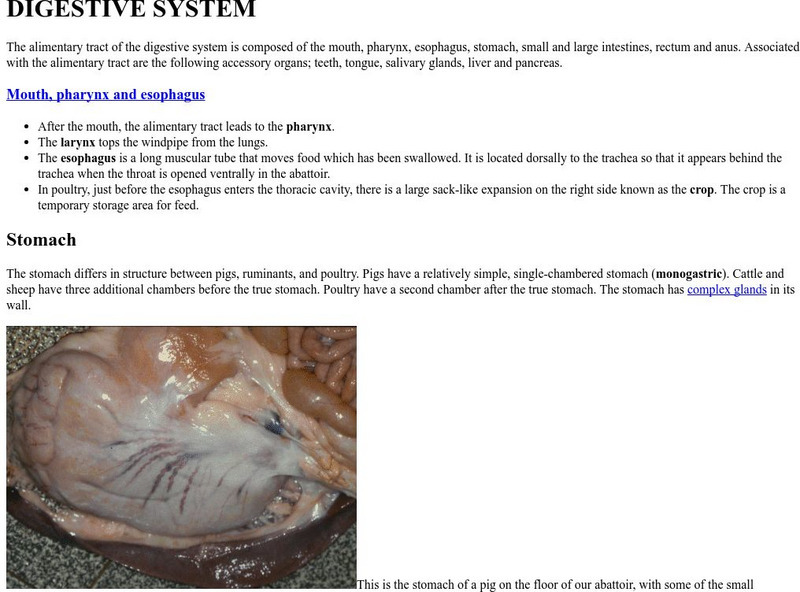Curated OER
Sponges, Cnidarians, Flatworms, and Roundworms
For this simple animals worksheet, learners review the characteristics of sponges, cnidarians, flatworms, and roundworms. This worksheet has 12 matching questions.
Curated OER
Mussel Anatomy Lesson Plan
Students identify the parts and functions of a mussel. They explain how its physical adaptations help it survive in its habitat. They label the parts as a quiz to complete the lesson.
Curated OER
Snot: NC Summer Tour Lesson 2007
Students study various aspects of mucous. In this mucous lesson, students investigate the purpose of mucous. Students create fake mucous.
Curated OER
9 Phyla of the Animalia Kingdom.
Young scholars identify characteristics of all 9 phyla of the Animalia Kingdom. They create a table of the 9 phyla and research a representative organism for each.
Curated OER
Beef and Beef By-Products
Students examine the various types of beef and the many uses of its by-products. They increase their knowledge by playing a game of "beef bingo."They discuss what parts of beef animals are their by-products.
Curated OER
Transport
A multiple-choice quiz about the transport of substances between cells, this would work well as a pretest and/or post-test. It refers to chapter seven of an unnamed textbook, but it is a Word document, so it can easily be edited.
Curated OER
They Don't Just Eat Grass
Students consider the USDA daily recommendations to create a "feed" product for middle schoolers. In this Health lesson, students learn about the ingredients in feed that is fed to livestock and apply the method to creating feed rations...
Biology Junction
Flatworms
In this flatworms instructional activity, high schoolers identify and color the different parts of a flatworm. They complete 14 short answer questions related to the topic.
Curated OER
Dinosaurs
In this earth science worksheet, students match each vocabulary term, that names something specific related to earth science, with its correct description found in the right column. They identify different types of scientists and various...
Curated OER
Sunflower Stars
In this sunflower star worksheet, students read about sunflower stars. They then use what they learned and answer the 18 questions on the page. They need to use a dictionary for one of the sections. The answers are on the last pages.
Curated OER
They Don't Just Eat Grass
Middle schoolers explore and examine different types of feed used for livestock. They discuss types of feed, the need for energy and health, and create graphs of food compared to categories. Students organize data and complete worksheets...
Curated OER
Invertebrates
In this invertebrates instructional activity, students read about the characteristics of the different groups of invertebrates. Then students complete 10 multiple choice questions.
Curated OER
Characteristics of Living Things
Students examine the characteristics of living things. They list the differences between living and non-living things, explore areas around the school, and create a Venn diagram for items found in the school areas.
Curated OER
VERTEBRATES
Seventh graders describe the main characteristics of warm-blooded vertebrate animals. They compare and contrast the two different groups of warm-blooded vertebrate animals by looking at external, reproductive, and growth characteristics.
Curated OER
What Do We Have In Common?
Seventh graders perform a dissection on a mussels and label their internal organs. In groups, they compare and contrast the mussels structure to those of human beings. They also review the functions that are necessary for survival and...
Curated OER
Cell Community
Seventh graders use technology to review cell structure and function. In this cells less, 7th graders review the parts and functions of a cell, and use photography/video and PowerPoint to enhance their explorations.
Curated OER
Halloween: Arachnids
Students participate in class discussion about the movie Arachnophobia. In this biology lesson, students find articles and photos of a species that interest them. They share it with their group.
Other
Bio Anim
BioAnin presents 3-D labeled images of all of the major systems of the human body, for example, the digestive system and the endocrine system. The images are embedded in slideshows. The site also has interactive 3-D models that can be...
University of Guelph
Department of Animal and Poultry Science: Digestive System
The main focus here is on the comparative anatomy of animals raised for meat. Beware of the photographs, as they are dissection photos.
Regents of the University of Michigan
Animal Diversity Web: Introduction to Teeth
The Animal Diversity Web offers a very good description of teeth in the digestive process of mammals. Covers the variety of teeth and links to discussions on a variety of teeth issues.
Math Science Nucleus
Math/science Nucleus: Appendix Animation
With a focus on the appendix, this site explores, in a storybook format, the digestive system. The story involves a young boy with stomach pain which turns out to be appendicitis.
Other
Dr. Saul: Biology in Motion
This interactive site provides animations and activities in several areas of physiology. The images are simple, but clear. The accompanying text provides a good description of the process being shown.
BBC
Bbc: Gcse Bitesize: Animal Organization Digestion
The major nutrients required for a healthy diet are carbohydrates, proteins, and lipids. The digestive system breaks down large molecules of food, which are then absorbed into the bloodstream. After reading, try the quiz.
BBC
Bbc: Gcse Bitesize: Animal Organization Digestion Aqa
This lesson focuses on the structures of carbohydrates, proteins, and lipids including defining terms, a brief discussion of what they do, and diagrams of each. It also provides a link to a test.


